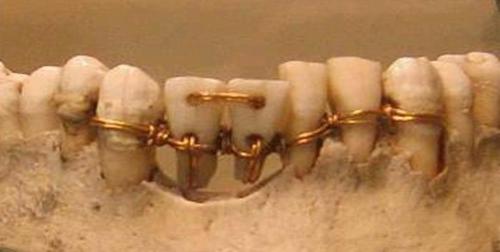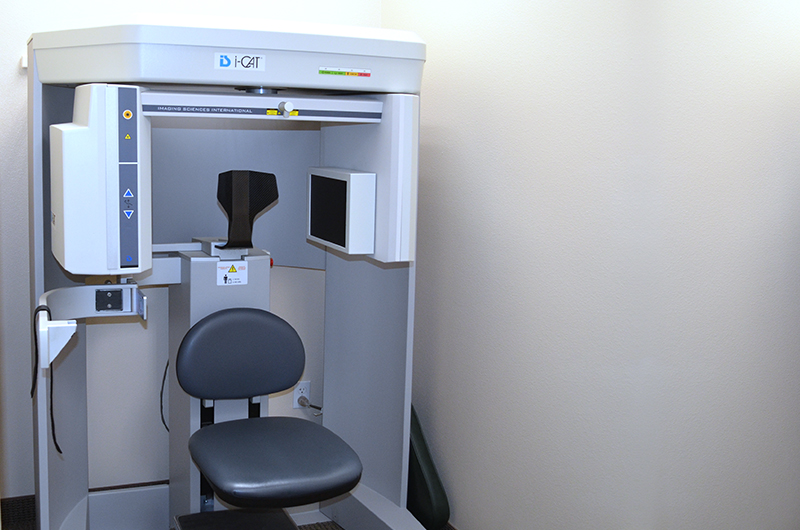The idea of creating the perfect smile might seem like a modern-day dentistry innovation, but the pursuit of straighter teeth actually dates back to ancient times. The history of orthodontics has its roots in ancient Egypt, Greece, and Rome, going back as far as 1600 BC. There’s even been evidence of orthodontic devices found in the remains of Egyptian mummies! Crazy, right?
Curious about the history of orthodontics and how it has changed and evolved over the years? In this blog, Okuda & Noorda Orthodontics is sharing a brief history of orthodontics. It’s full of fun tooth facts we bet you never knew — and some we didn’t know either!
1. Even the Mummies Used Braces!
Yep, just like we now use metal and wires to guide your teeth into a better position, archaeologists have found evidence that ancient Egyptians did something very similar. Many mummies that have been studied had crude metal bands around their teeth. Experts believe that the Egyptians tied these bands together with catgut to put enough pressure on the teeth for them to move.
2. Hippocrates Wrote the First Known Description of Tooth Irregularities
The famous Greek physician and the father of medicine, Hippocrates, was the first to document tooth irregularities way back in 400 BC. He even spoke of potential treatment options, saying, “If the teeth are diverted or displaced, it is necessary to unite them with a thread of gold.” It appears as though we’ve been focusing on creating perfect smiles for quite some time!
3. The Etruscans and the Romans Used Braces-Like Devices Too
The Etruscans weren’t only concerned about straight teeth during their lifetimes — they even wanted to preserve their perfect smiles in the afterlife. Archaeologists have discovered proof that the Etruscans buried their dead wearing orthodontic devices to maintain the position of their teeth. An ancient dental device was also found in a Roman tomb, complete with instructions for how to use it.
4. Modern-Day Orthodontics Started in France
Let’s fast forward to the 18th century when orthodontics took a significant modern turn. Pierre Fauchard, considered the father of modern dentistry, revolutionized the industry when he created an appliance called a “bandeau” in 1728. Basically a horseshoe-shaped strip of metal, these 18th century braces also had holes that fit over the wearer’s teeth to correct their alignment. A few decades later, another French dentist named Louis Bourdet (who was also the dentist for the King of France!) expanded on Fauchard’s ideas. He is also credited with the discovery that removing the wisdom teeth could help resolve teeth overcrowding.
5. The First Modern Braces were Created in 1819

Even though rudimentary orthodontic devices existed far earlier, Christophe-Francois Delabarre invented the first real version of what we now know as braces. His device placed a wire crib around the teeth in pairs to keep them in the correct position.
6. Elastics Made Their Appearance in 1843
The teeth straightening revolution continued with the term “orthodontia” first being coined in 1841. Then, Dr. Edward Maynard introduced elastics to the mix in an effort to correct jaw alignment. As we now know, jaw alignment is critical to correcting overbites and crooked teeth, so this was a huge achievement for orthodontics — one that we still use to this day!
7. Edward Hartley Angle Developed the First Classification System for Malocclusions
A malocclusion refers to a misalignment of the upper and lower jaws and the term was first coined by the father of modern orthodontics, Dr. Edward Angle. In addition to documenting the true properties of malocclusion, he founded what is now called the American Association of Orthodontists.
8. The First Adhered Brackets were Used in the 1970s
The word “braces” only came into use in the 1900s. Prior to the 1970s, orthodontists attached braces brackets to patients’ teeth by winding wires around the teeth. But then came the invention of dental adhesives, which allowed dentists to secure the brackets directly to the teeth. Stainless steel also became the material of choice for braces (instead of gold, which was much more expensive). During this time, lingual braces, a type of braces adhered to the back of the teeth instead of the front, grew in popularity.
9. Technology Transformed the Orthodontic Industry

Technological advancements have made the field of orthodontics stronger than ever before. Thanks to innovative devices such as iTero scanners, digital x-rays and 3D dental imaging, orthodontists today can see the inside of patients’ mouths in the highest detail, allowing them to create the most accurate treatment plans possible. We use these cutting edge technologies at our Henderson orthodontic practice to provide our patients with the very best care.
At Okuda & Noorda Orthodontics, we’re proud to be a part of an industry that has been transforming smiles and building confidence for millennia and adding to the history of orthodontics. Ready to take the first step in your smile journey? Contact us today to book a complimentary consultation.


